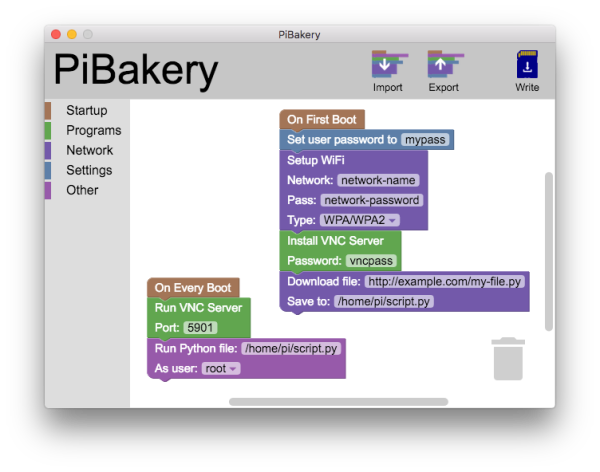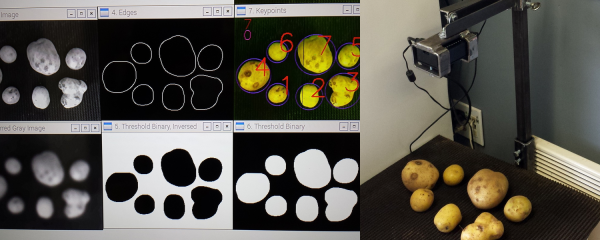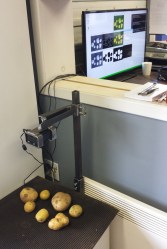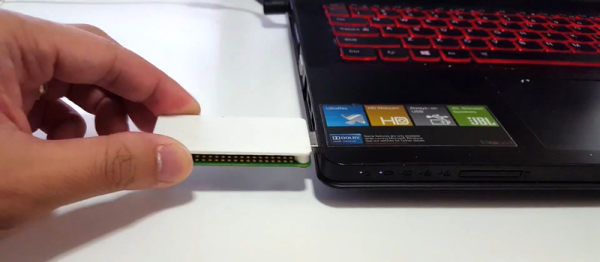[David Ferguson] has put together a nice little tool called Pi Bakery. Half MIT Scratch, half configuration utility, it puts a nice visual face on all the various start-up scripts, and kludges that the Raspberry Pi community uses to configure the popular single board computer.
Raspberry Pi’s are a little weird. They mostly get crammed into the slots microcontrollers used to live in. The nice part about microcontrollers is that they just turn on and start going. There’s no OS to boot. No file system to mount. Of course the downside to microcontrollers is often that there’s no OS to boot and file system to mount. Regardless, mostly you’ve got to spend a bit configuring a Raspbian install before a Raspberry Pi really starts to encroach on the microcontroller’s territory.
Pi Bakery abstracts all this. You can drag blocks, representing scripts, in the order you’d like them run. If you want to your Pi to boot up, connect to WiFi, and then start a VNC server it’s as easy a dragging the blocks in the right order and filling in the blanks. You can see an example of it in operation in the video after the break.
Continue reading “Bake A Fresh Raspberry Pi: Never Struggle To Configure A Pi Again”


















